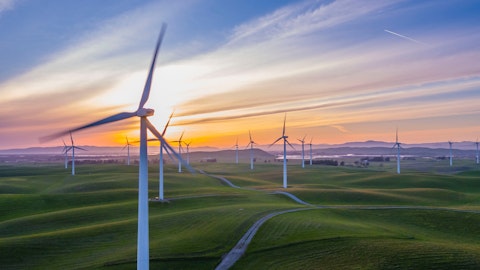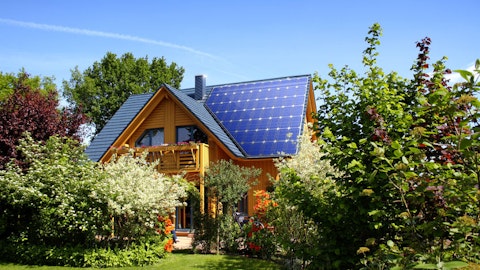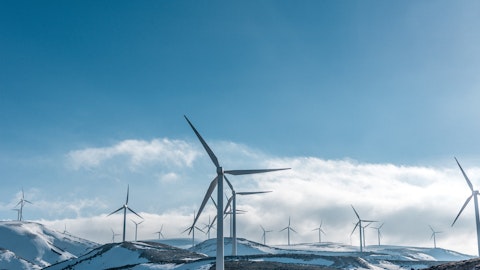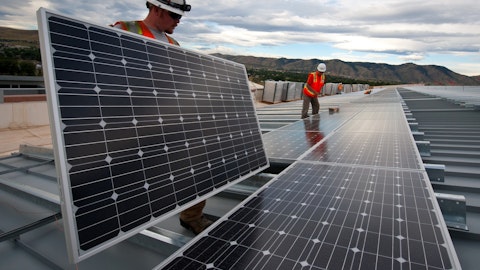So €“ and also the investors in the end market has a stronger affordability on high on cost combined with the fact that, the ingot capacity right now to add CSIQ more than the silicon capacity. So we believe, there’s certain resistance on the price reduction moving into next year. So, we do not anticipate any sudden death on pricing, so that’s not going to happen.
Shawn Qu: Brian, I want to add one more comment that, the ASP deploys measured by US dollar maybe become a little bit lesser by local currency, for example, Japanese yen and euro and even Chinese RMB are not really declining. In some cases the price actually is moving up. However, we are facing a situation that US dollar is very strong. So when you look at US dollar, it looks like prices going up, even if it is going down. Some of local cost €“ price is quite stable and even going up.
Yan Zhuang: Yeah. And Brian, on top of that, we’re quite confident that our margins can improve moving next year because we’re actually €“ we €“ as you know, we have been always stronger in more developed markets, high-priced markets, and particularly in the US market is going to be quite strong next year. And we’re still expanding our talent capacity. And channel-wise, we’ve been always strong. We’re shipping half of our volume into DG market. And given the electricity retail price has gone up so much, we’re experiencing strong demand from that channel. And obviously, the price tolerance in that channel is getting very strong. So, we’re quite confident that, it’s going to be a good year for us.
Brian Lee: Okay. That’s great. Super helpful. Last one for me, and I’ll pass it on. I appreciate the updated thoughts around the US manufacturing plans. I think you had talked about recently looking at just module capacity. So, maybe if you could give us a bit more detail. Are you still thinking of building just a module-only facility? What would be kind of the scale and time line? Would you have production on in 2023, or would it be more 2024? And then can you give us a sense of the CapEx dollars and funding strategy you would be putting behind it? Thank you.
Yan Zhuang: Okay. So capacity-wise, as you know, we have a guidance, volume guidance for 2023 of — sorry, 30 to 35 gigawatts — that’s our guidance for next year, shipment guidance. So, in terms of CapEx and capacity, we are actually — we’ll have to support that. And — so by year-end this year, we have 20 gigawatts of wafer internal ingot wafer and also 20 gigawatts of cell and 32 gigawatt of module to end of this year. Moving into next year, we’re going to add more of TOPCon capacity on cell. So, total cell production next year is going to be 26, 27-gigawatt. Sorry, in terms of cell capacity 26, 27 output. In terms of output, it’s 26, 27 gigawatts. So, we’re going to have more than 20-gigawatt of ingot and wafer. So, will be more — over the course of next year, we can get more module capacity.
And also that includes the expansion of Thailand capacity of 8-gigawatt of cell and 60-gigawatt module. So, we’re going to have enough capacity to support our volume guidance. We, of course, with some cell purchase like around 8, 9 gigawatt of cell purchasing. So, that’s the capacity plan. And CapEx-wise, we’re actually in the process of — we already started investment.
Brian Lee: So, — okay, sorry. I was wondering, just specifically in the US as well of–




